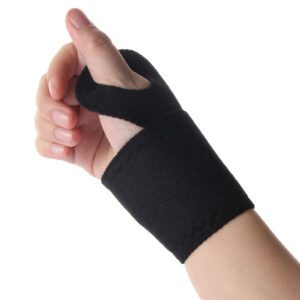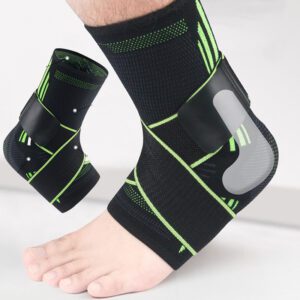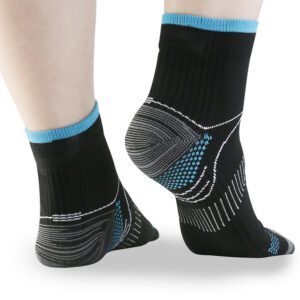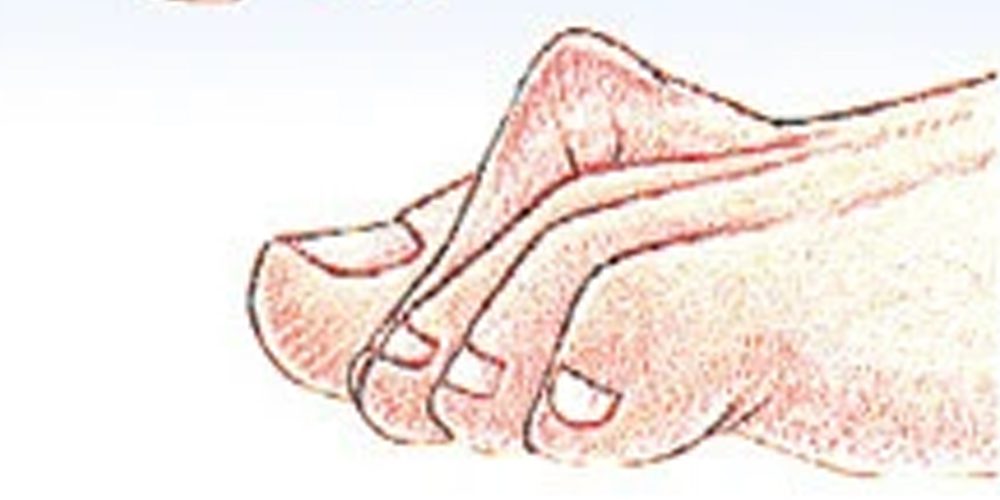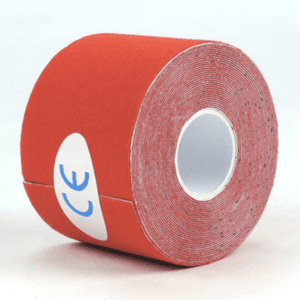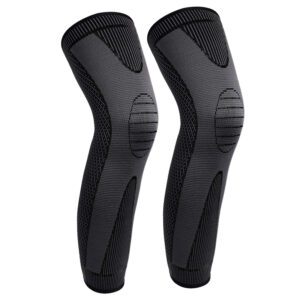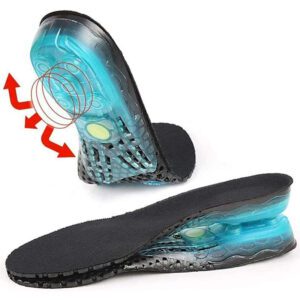Are you experiencing a sharp pain in your heel when you take your first steps in the morning? Or maybe after a long day of standing or walking, you find yourself with an ache in your foot that just won’t go away? If so, you might be one of the millions of people suffering from plantar fasciitis. Plantar fasciitis is a common foot condition that occurs when the plantar fascia, which is a thick band of tissue that runs along the bottom of your foot, becomes inflamed or irritated. This can cause pain and discomfort in the heel or arch of your foot. The condition is most commonly seen in runners, athletes, and those who spend long hours on their feet. Symptoms of plantar fasciitis can vary from person to person but often include:
Pain and Stiffness
The most common symptom of plantar fasciitis is pain and stiffness along the bottom of the foot near the heel. This pain can also radiate towards the toes.
Heel Spurs
In some cases, plantar fasciitis can lead to bone spurs forming on the heel bone.
Tenderness
The area around the affected part may feel tender to touch.
Difficulty Walking
For some individuals, walking may become difficult due to intense pain from their injury. If you’re experiencing these symptoms, don’t worry! There are several things you can do to help alleviate your pain and get back on track with your daily activities. Keep reading for our top tips on how to cure plantar fasciitis in one week!
Rest and Ice
As for many other inflammation symptoms and sports injuries, the R.I.C.E method is the very first one you should try if you want to cure plantar fasciitis in one week or less.
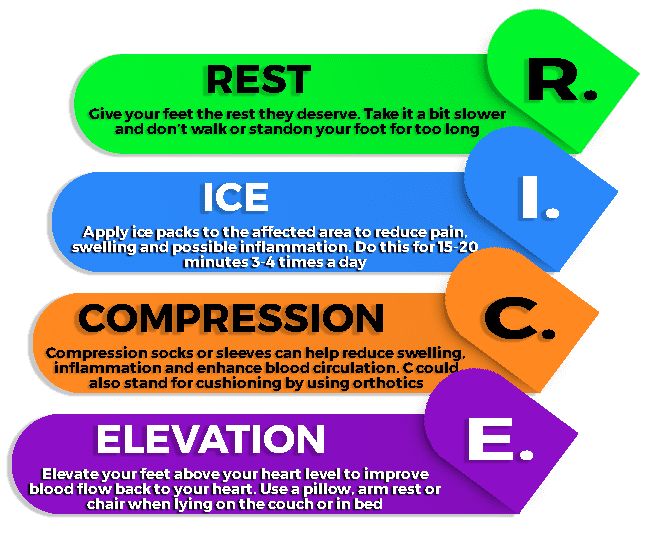
Importance of Rest and Ice in Reducing Inflammation and Pain
If you’re suffering from plantar fasciitis, one of the most important things you can do is rest your feet. Plantar fasciitis occurs when the plantar fascia, a band of tissue that runs along the bottom of your foot, becomes inflamed. When you walk or stand on your feet for extended periods, it puts pressure on the already-inflamed plantar fascia, making the pain worse. Resting your feet helps to reduce that pressure. Icing is another essential part of treating plantar fasciitis. Applying ice to the affected area can reduce inflammation and help relieve pain. When you apply ice to your foot, it constricts blood vessels in the area, reducing blood flow and inflammation.
Tips for Icing the Affected Area Effectively
When it comes to icing your foot for plantar fasciitis relief, there are few things to keep in mind. First, don’t apply ice directly to your skin; this can cause frostbite or other skin damage. Instead, wrap an ice pack or bag of frozen peas in a towel before applying it to your foot. You should also avoid icing for too long at once; 20 minutes at a time is plenty. If you leave an ice pack on for too long, you risk damaging your skin or even exacerbating inflammation by constricting blood vessels too much. Another tip for effective icing is to elevate your foot while doing so. This helps reduce swelling by allowing fluid to drain away from the affected area more easily. Be consistent with icing; doing it once won’t be enough to make a real difference in how you feel. Try icing two or three times per day for best results. By practicing both rest and icing techniques, you can help alleviate symptoms of plantar fasciitis and get back on your feet more quickly.
Stretching Exercises
One of the most important aspects of curing plantar fasciitis in one week is stretching. Stretching helps to increase flexibility and mobility in the foot and calf muscles. It also helps to reduce tension and tightness, which can contribute to pain and inflammation.
Why Stretching is Important for Plantar Fasciitis Recovery
When you have plantar fasciitis, the plantar fascia – a thick band of tissue that runs along the bottom of your foot – becomes inflamed. This causes pain and stiffness in the foot, especially when you first wake up in the morning or when you stand for long periods of time. Stretching helps to reduce inflammation by increasing blood flow to the affected area. In addition to reducing inflammation, stretching also helps to prevent future injuries by increasing flexibility and mobility. When your muscles are flexible, they are less likely to become strained or damaged during physical activity.
Demonstration of Effective Stretching Exercises for Foot and Calf Muscles
The following stretching exercises can help with plantar fasciitis recovery:
1. Towel Stretch: Sit on the floor with your legs straight out in front of you.
Place a towel around the ball of one foot. Holding onto each end of the towel, gently pull it towards your body until you feel a stretch in your calf muscle. Hold for 30 seconds and repeat on other side.
2. Calf Raises: Stand on a step or curb with only your toes on the step/curb and heels hanging off.
Slowly raise up onto balls of feet then lower heel below edge level (as if pushing down through floor). Repeat 10-15 times.
3. Toes Toward Wall: Start in a lunge position with your back leg straight and heel firmly on ground while front leg is bent. Place your hands on the wall at shoulder level.
Keeping both heels on the ground, lean forward slowly until you feel a stretch along the back of your calf muscle. Hold for 30 seconds and repeat on other side.
4. Resisted Ankle Flexion: Sit with one leg outstretched in front of you and loop a resistance band around the ball of your foot. Holding onto each end of the band, flex your ankle up towards you as far as possible, then release back to starting position.
Repeat ten times and switch legs.
5. The Runner’s Stretch: Stand facing a wall with one foot in front of the other and hands resting against wall at shoulder height.
Bend front knee while keeping back leg straight with heel on ground behind you (as if stretching for running). Push hips forward until you feel stretch in calf muscle; hold for 30 seconds then alternate feet.
Performing these exercises daily can help to stretch tight muscles, reduce inflammation, and promote healing within one week. Stretching is an essential part of plantar fasciitis recovery process that should not be overlooked. Incorporating these stretches into daily routine can help to alleviate pain and promote healing within one week!
Footwear Changes
Wearing the wrong shoes and footwear is one of the most mistakes you can make that can lead to plantar fasciitis. At the same time this is the easiest part that you can change by yourself.
How Improper Footwear Can Contribute to Plantar Fasciitis
Wearing improper footwear can contribute to the development of plantar fasciitis. Shoes that lack proper arch support, cushioning, and stability can cause the plantar fascia ligament to stretch and strain excessively, leading to inflammation and pain. For example, wearing high heels or flip flops for extended periods puts added pressure on the ball of your foot, which can lead to plantar fasciitis over time. Additionally, shoes that are too tight can cause your foot muscles to work harder than necessary, exacerbating any existing conditions.
Tips for Choosing Supportive Shoes with Proper Arch Support
When selecting footwear for reducing plantar fasciitis pain and inflammation, it’s important to look for shoes that provide adequate arch support. Arch support helps distribute pressure evenly across your foot while walking or standing.
Here are some tips on what to look for in supportive shoes: 1. Arch Support: Look for shoes that have built-in arch support or orthotics inserts designed specifically for plantar fasciitis. 2. Cushioning: Choose a shoe with extra cushioning in the heel area. This will help absorb impact as you walk or run. 3. Stability: Opt for a shoe with good stability features like a firm sole that prevents excessive rolling of your foot inward (pronation). 4. Fit: Make sure the shoe fits properly and provides plenty of wiggle room for your toes so they don’t feel cramped. 5. Comfort: Choose a shoe made from breathable material that keeps your feet cool and comfortable all day long.
By following these tips when selecting footwear, you may be able to reduce stress on your feet and relieve symptoms of plantar fasciitis quickly and effectively.
Melting away tension: Massage Therapy
Plantar fasciitis can cause a lot of tension in foot muscles, and massage therapy can help reduce that tension. Massage therapy involves manipulating soft tissues in the body in order to promote healing and relaxation.
Not only does it feel great, but it can help reduce inflammation and improve circulation, which are both important for healing from plantar fasciitis. There are different types of massage techniques that can be used to alleviate pain caused by plantar fasciitis. One effective technique is deep tissue massage, which targets the deeper layers of muscle tissue. This type of massage can help break up scar tissue and loosen tight muscles.
However, deep tissue massage can be uncomfortable for some people, especially if they have a low tolerance for pain. Another technique that is more gentle but still effective is myofascial release. This technique involves applying pressure to trigger points (knots in the muscle) to release tension and improve blood flow. Myofascial release can be done with a therapist or by using a foam roller or tennis ball at home.
Self-massage is also an option for those who want to try massage therapy at home without paying a professional masseuse or therapist.
Here’s how: 1) Sit on a chair with your feet flat on the ground. 2) Place a golf ball under your foot. 3) Roll your foot over the golf ball, focusing on areas that feel tense or painful. 4) Repeat for 1-2 minutes on each foot.
Another self-massage technique involves using your hands: 1) Sit on the floor with one leg extended out. 2) Use your thumbs to apply pressure to the bottom of your foot near the heel. 3) Move your thumbs up towards your toes while applying pressure. 4) Repeat this motion several times along the entire length of your foot.
Remember: If you experience any pain while performing self-massage, stop immediately. Massage therapy can be a great way to complement other treatments for plantar fasciitis, but it should not be relied on as the sole treatment method. Always consult with your healthcare provider before trying any new treatment.
Night Splints
Night splints are a proven way to help with all kinds of foot pain, including plantar fasciitis.
The Benefits of Night Splints for Plantar Fasciitis
If you suffer from plantar fasciitis, you know the pain can be relentless. You may find some relief during the day when you’re up and moving around, but that same relief may not be present while sleeping at night. This is where night splints come in. Night splints are designed to keep your foot in a flexed position while you sleep, helping to stretch out the plantar fascia and reduce inflammation. By wearing a night splint regularly, you may even find that your pain levels decrease over time.
Tips for Wearing Night Splints Comfortably
While night splints can be incredibly helpful in treating plantar fasciitis, they can also be uncomfortable and difficult to get used to at first. Here are some tips to help make wearing a night splint more comfortable: 1. Start Slow: Don’t try to wear your night splint all night on the first day of use. Start with just an hour or two and gradually increase the time each day until you can comfortably wear it throughout the entire night. 2. Wear Socks: Wearing socks with your splint will help reduce friction and prevent blisters from forming. 3. Loosen Straps: If the straps on your night splint are too tight, they can cause discomfort or even cut off circulation. Loosen them until they’re snug but not overly tight. 4. Practice Good Hygiene: Since you’ll be wearing your night splint for an extended period of time, it’s important to keep it clean and dry to prevent infections. 5. Be Patient: Don’t expect immediate results from using a night splint; it can take weeks or even months before significant improvement is seen.
What Type of Night Splint to Use
When it comes to choosing a night splint, there are several options available. The three most common types are dorsal, plantar, and boot style. Dorsal splints run along the top of the foot and attach to the leg with Velcro straps. They’re typically more comfortable than other types of night splints and allow for some movement while sleeping. Plantar splints fit around the bottom of your foot and keep it in a flexed position. Some people find these uncomfortable to wear, but they can be effective in stretching out the plantar fascia. Boot-style night splints encompass both the foot and lower leg, keeping them in a fixed position throughout the night. While they may be uncomfortable at first, they can be very effective in reducing pain over time.
Bottom Line
If you suffer from plantar fasciitis, adding a night splint to your treatment plan may help reduce inflammation and increase mobility over time. Start slow when getting used to wearing one, practice good hygiene, and be patient when waiting for results. With consistent use, you may find that your symptoms improve significantly over time.
Over-the-counter Medications
If you’re experiencing severe pain and inflammation from plantar fasciitis, over-the-counter (OTC) medications can be a great option to help reduce discomfort. However, it is important to understand what types of medications are available and how they work before taking them.
Nonsteroidal Anti-inflammatory Drugs (NSAIDs)
NSAIDs are one of the most common OTC medications used for treating plantar fasciitis. These drugs work by reducing inflammation in the body, which can help alleviate pain in the foot caused by plantar fasciitis. Some commonly used NSAIDs include ibuprofen, aspirin, and naproxen sodium. It is important to note that while these drugs can be effective at reducing pain and inflammation, they should not be taken for prolonged periods of time or in large quantities as they can cause side effects such as stomach irritation or bleeding.
Topical Analgesics
Topical analgesics such as creams or gels can also be effective at relieving foot pain caused by plantar fasciitis. These products typically contain ingredients such as menthol or capsaicin which work by numbing the affected area or producing a warming sensation that helps alleviate pain. It is important to follow the instructions carefully when using topical analgesics as some products may cause skin irritation if used improperly.
Steroid Injections
In severe cases where other treatments have failed to provide relief, doctors may recommend steroid injections to alleviate pain and reduce inflammation. These injections are typically administered directly into the affected area and can provide immediate relief of symptoms. However, it is important to note that there are risks associated with steroid injections including potential side effects such as nerve damage or infection. As such, they should only be considered as a last resort after other treatments have been exhausted.
Acetaminophen
Acetaminophen is another commonly used OTC medication for pain relief. Unlike NSAIDs, it does not have anti-inflammatory properties and works by blocking pain signals in the brain. While acetaminophen can be effective at reducing pain associated with plantar fasciitis, it should be used with caution as it can cause liver damage if taken in high doses or combined with alcohol.
Bottom Line
When using any over-the-counter medications for plantar fasciitis, it is important to follow the instructions carefully and consult with a medical professional if you have any concerns. While these medications can provide relief from uncomfortable symptoms, they should not be relied upon as a long-term solution and should always be used in conjunction with other treatments such as rest, stretching exercises, and proper footwear.
Conclusion
Plantar fasciitis can be a painful and frustrating condition, but with the right approach and consistent effort, it is possible to cure it in just one week. By following the tips outlined in this article, you can reduce inflammation, relieve pain, and promote healing in your foot muscles.
Remember to rest your foot as much as possible, and use ice to reduce swelling. Stretching exercises can help loosen tight muscles and promote flexibility. Investing in supportive shoes with arch support will also help prevent future flare-ups of plantar fasciitis. Massage therapy and night splints are additional treatments that can be effective for some people. Over-the-counter medications like ibuprofen or naproxen may also provide relief for those experiencing significant pain or inflammation. One of the most important things you can do is to not give up hope if progress feels slow at times.
Healing takes time, but consistency is key. Continue practicing these techniques even after the one-week timeframe has passed to ensure long-term relief from plantar fasciitis symptoms. Remember that every body is unique, so what works for someone else may not work for you. Be patient and keep an open mind as you experiment with different treatments until you find what works best for your specific needs.
By committing to a comprehensive approach that encompasses rest, stretching exercises, proper footwear choices, massage therapy, night splints, and over-the-counter medications if necessary – you will be on your way to overcoming plantar fasciitis once-and-for-all.









